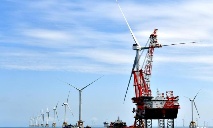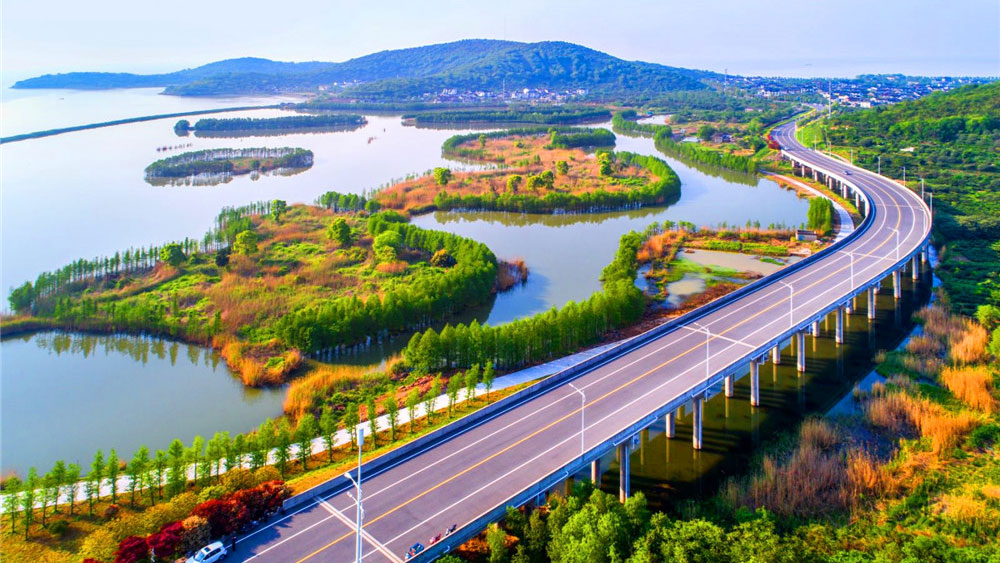Experts share their views on the CPC's governance
LI MIN/CHINA DAILY
Editor's note: July 1, 2023, marks the 102nd anniversary of the founding of the Communist Party of China. Three experts share their views on the Party's governance and the far-reaching impacts of its leadership on the country's economy, trade, people's livelihoods and culture.
Growth miracle stuns world
Starting from the late 1970s, when the reform and opening-up policy was launched, the Communist Party of China has focused on de-collectivization of agriculture, opening up the country to foreign investment and advanced technology, and encouraging entrepreneurship.
With nationwide industrial takeoff, economic reforms broadened, while price controls, and protectionist policies and regulations were lifted.
Nothing exemplifies the success of China's reform and opening-up more than Shenzhen. In 1979, it was a poor fishing village with some 20,000 residents struggling at subsistence level. Today, it has an urban population of almost 18 million and its per capita GDP (nominal) is more than $27,000, on par with Portugal and Bahrain. In this process, a special catalyst role was played by the special economic zones, which were initiated in coastal China.
In 2018, economic development in Guangdong province moved to a new stage with the launch of the Greater Bay Area, China's "Silicon Valley".
Initially, like Western Europe and Japan in the postwar era, Chinese companies used to imitate global technology leaders. Today, Chinese innovators and high-tech companies such as Huawei and ByteDance (Tik-Tok's parent company) are being imitated by global competitors and cooperators. Hence, the US' efforts to contain Chinese innovators in the name of "national security".
In four decades, Shenzhen has transformed itself from a poor village to one of the most advanced metropolises.
When reform and opening-up were launched in the late 1970s, the standard Western reform packages were shaped by the "Washington Consensus", which promoted disruptive liberalization, deregulation and privatization across the board. Such "reforms" primarily benefited foreign investors, domestic oligarchs and the informal economy, not the ordinary people.
That was not the Chinese path. The Chinese path favors stability, gradual advances and pragmatic experimentation.
While the CPC leadership with former president Jiang Zemin as its core further developed socialism with Chinese characteristics — through his "Theory of Three Represents" — it also launched a campaign against corruption in the 1990s. What paved the way for a decade of export-led double-digit growth was China's membership of the World Trade Organization in 2001. And former president Hu Jintao highlighted the importance of "China's peaceful development".
More important, under President Xi Jinping's leadership, policies have accelerated China's post-industrialization process.
Today China's growth may be slowing relative to the recent past, but its per capita income continues to rise rapidly. In the new era, rebalancing builds on world-class innovation and expanding consumption. Moreover, the eradication of extreme poverty in a developing country of more than 1.4 billion people is a historic achievement.
It is this high-quality growth that supports the rise of the world's largest emerging middle-income group. In 2017, a set of bold objectives for 2035 were adopted as staging posts to achieve the second centenary goal of developing "China into a great modern socialist country that is prosperous, strong, democratic, culturally advanced, harmonious, and beautiful" by the middle of this century. The goal is also to make China a global leader in science and technology, creating a green economy, and reducing the urban-rural income gap.
Through the 20th century, the major economies touted globalization that benefited mainly the West. Their exclusive globalization was supported by the World Bank, the International Monetary Fund, the World Trade Organization and other multilateral institutions. This status quo prevailed as long as the West drove global growth — that is, till the 2000s.
But the West's exclusive globalization is de-integrating, thanks to the United States' two decades of "global war on terror" and half a decade of trade wars, the pandemic-induced global depression, the role of the US and NATO in inciting the Russia-Ukraine conflict, and global de-integration. In fact, the US' desperation to contain China's peaceful rise is part of a broader effort to maintain Western supremacy.
As a percentage of the world's GDP, world trade is at the level where it was around 2006. Worse, global investment net inflows as a percentage of global GDP are less than half of the level in 1999.
And as migration flows are being blocked, the number of forcibly displaced people has soared to almost 110 million, which is nearly three times the level of 1945 after the end of World War II.
Such a state of affairs is inhuman, destructive and untenable.
As secular stagnation is spreading in the West, growth prospects rely increasingly on China and other large emerging economies, which have fueled global growth since the late 2000s. These prospects are supported by the creation of the Asian Infrastructure Investment Bank, the BRICS New Development Bank, the Belt and Road Initiative, and the promotion of de-dollarization in bilateral trade.
The new emerging world economy now thrives on inclusive globalization, which seeks to lift all boats, not just a few. The future belongs to multipolar inclusion, not exclusion.
The author is the founder of Difference Group and has served at the India, China and America Institute (US), Shanghai Institutes for International Studies (China) and the EU Centre (Singapore).
 |
Photos
Related Stories
- Book on CPC history published in more foreign languages
- Report on CPC's "Second Integration" theory unlocks understanding of China
- Symphony concert held in Beijing to celebrate 102nd founding anniversary of CPC
- CPC sees membership surpass 98 mln
- CPC leadership reviews guidelines on policies supporting construction of Xiong'an
Copyright © 2023 People's Daily Online. All Rights Reserved.










